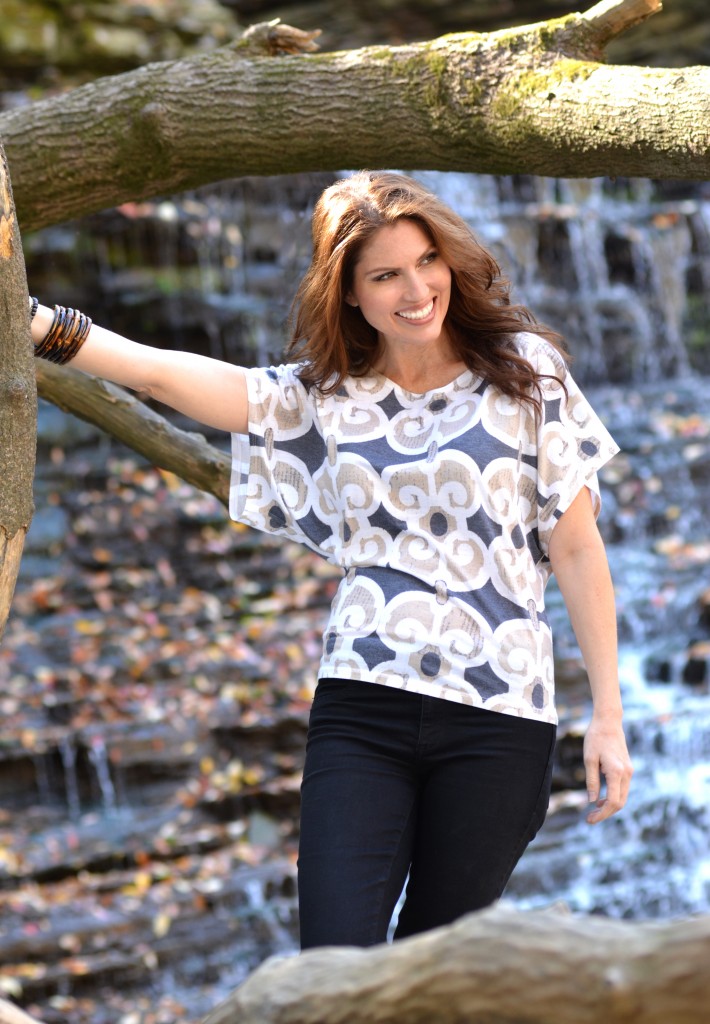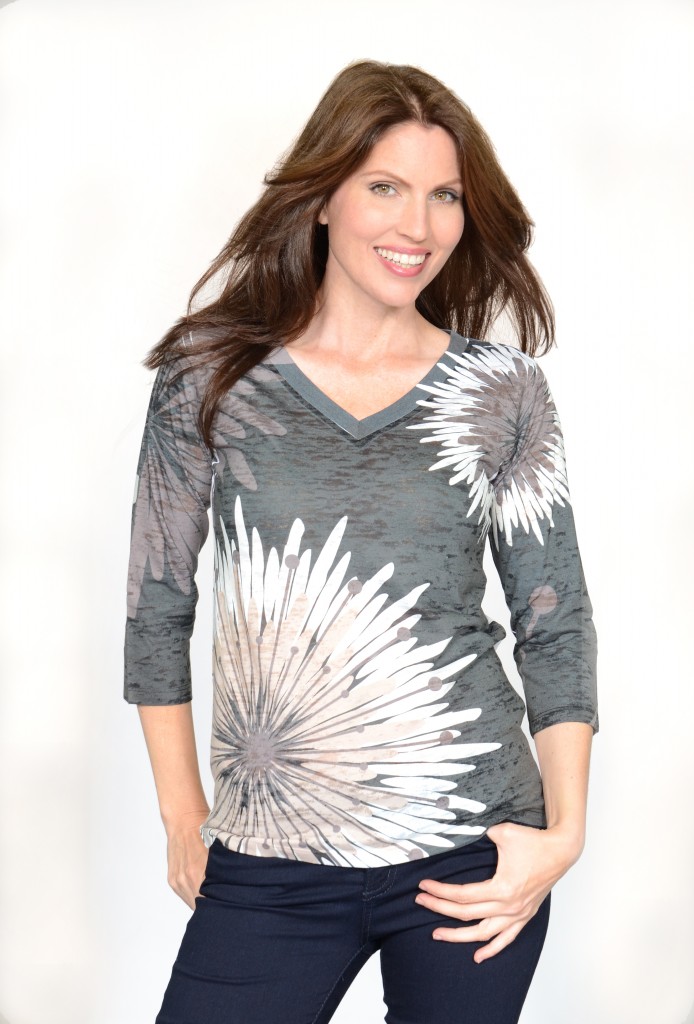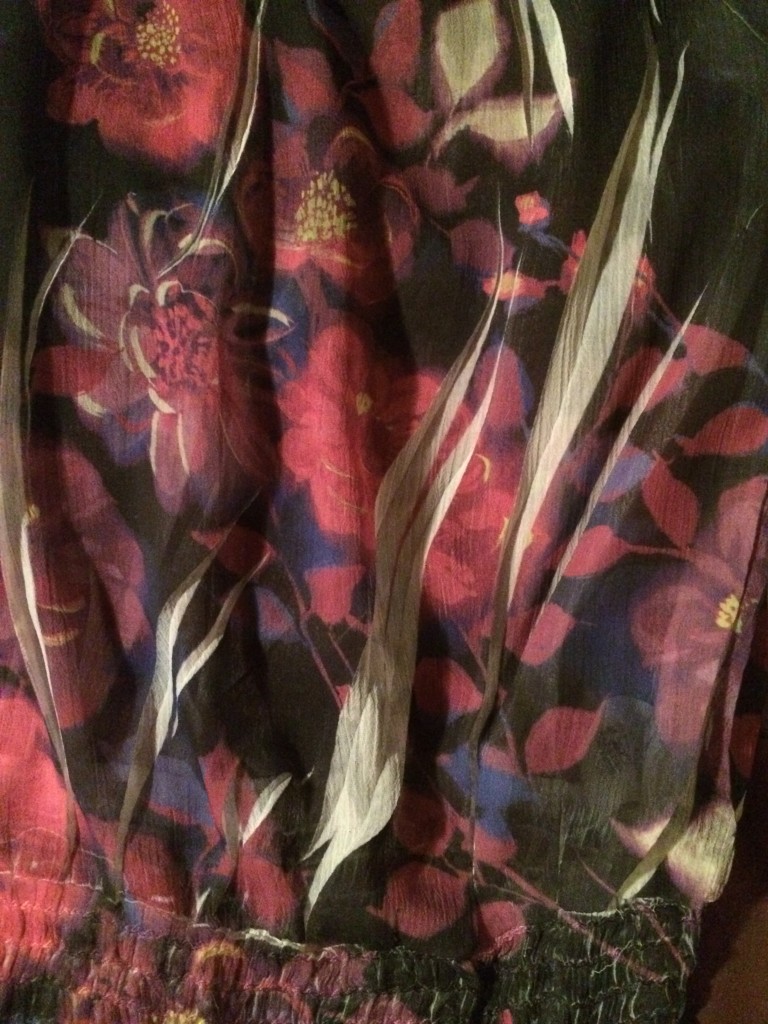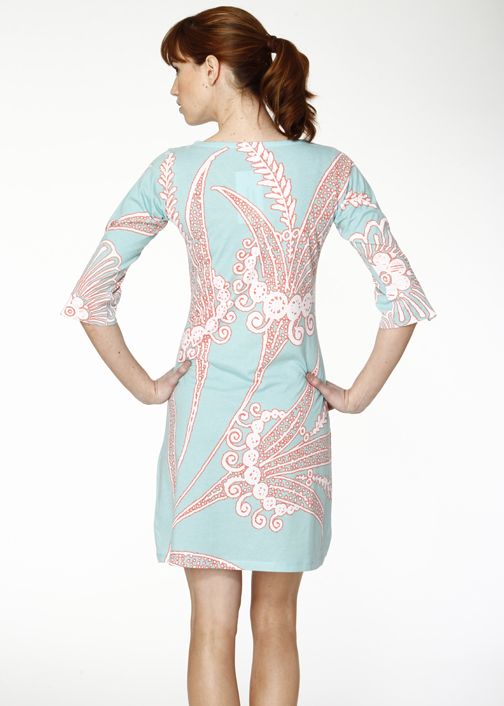Changes happen and fashion is one of those things that seem to change as quickly as any. The other morning I was finally awake enough to actually take a look around at the items that are in my wife and I’s closet. I tease my wife about how many outfits she has, but never really stopped to look at what was there. Then surprisingly, I noticed that her closet was full of sublimation garments. I could not believe it, since I am involved in that industry and I have not once made a shirt for my wife. So I started digging around and asked her where she gets the shirts I saw hanging in the closet while being amazed at how we afford such a full array of garments, I was shocked by how mainstream the retailers were who offered these sublimation garments.
 At this point my wife was completely befuddled by my sudden interest in her wardrobe and must have thought I was ready to have the “money” talk about all these shirts, but I continued asking questions. She pointed out shirts from Kohls, Charlotte Russe , New York & Co. and then pointed out one from a local factory outlet location, Before+Again Clothing, that only does events a few times a year right in St. Louis. So with that information I set out to reach the folks over at Before+Again Clothing to explore the trends in women’s fashion from people who know about all things having to do with sublimation fashion for women. Joe and Peter from Before+Again Clothing were kind enough to share some details with me about sublimation with women’ fashion. So, let’s dive in to the question and answer session I had with them by email.
At this point my wife was completely befuddled by my sudden interest in her wardrobe and must have thought I was ready to have the “money” talk about all these shirts, but I continued asking questions. She pointed out shirts from Kohls, Charlotte Russe , New York & Co. and then pointed out one from a local factory outlet location, Before+Again Clothing, that only does events a few times a year right in St. Louis. So with that information I set out to reach the folks over at Before+Again Clothing to explore the trends in women’s fashion from people who know about all things having to do with sublimation fashion for women. Joe and Peter from Before+Again Clothing were kind enough to share some details with me about sublimation with women’ fashion. So, let’s dive in to the question and answer session I had with them by email.
Q: When did Before+ Again get started in the women’s apparel market?
A: What began over a 2 year period with countless fabric printing experiments in a one-room shop, eventually led partners Joe Werner, Peter Daneyko and Jon Rianhard, to their eureka moment and the creation of the Before + Again™ label. That occurred in 2008 and our products can now be found in over 1,000 specialty boutiques in the U.S., Canada, Mexico and Australia.
Q: How did you get started in the market?
 A: The real excitement began when Joe’s wife, Susan, asked if some of her designs could be printed on fashionable and trendy burnout fabrics. Susan and her friends started wearing the new-look tees. That’s when the decision to create the Before+ Again Label began. It was in 2008 the height of the recession, but as a just -in- time manufacturer, our ability to be turn around highly creative pieces with low minimums fit well for a market that was nervous about high inventory levels. And in the fashion business it is key to be able to quickly react to what is on trend now and replenish product vs. waiting months for foreign goods which also require larger orders. Bottom line our equipment, design and production processes allowed us to mitigate risk to stores and give a tremendous amount of creative choice to consumers.
A: The real excitement began when Joe’s wife, Susan, asked if some of her designs could be printed on fashionable and trendy burnout fabrics. Susan and her friends started wearing the new-look tees. That’s when the decision to create the Before+ Again Label began. It was in 2008 the height of the recession, but as a just -in- time manufacturer, our ability to be turn around highly creative pieces with low minimums fit well for a market that was nervous about high inventory levels. And in the fashion business it is key to be able to quickly react to what is on trend now and replenish product vs. waiting months for foreign goods which also require larger orders. Bottom line our equipment, design and production processes allowed us to mitigate risk to stores and give a tremendous amount of creative choice to consumers.
Q: What do you see happening in the future in the women’s apparel market?
A: With a lot of new micro-fibers and great new synthetic poly blends we anticipate doing a lot more very creative sublimation printing on a variety of styles and fabrics.
 Let’s dive a little deeper into sublimation in the women’s fashion industry. As Joe and Peter mentioned this method of decoration really seemed to take off after 2006, noting that much of it had to do with the economy at the time. Prior to this time, much of the fashion available was mass produced overseas and the big box stores of the days were buying in container loads, if not more. As the world and the economy changed, so did the buying habits of many people. This opened the door for companies like Before+Again Clothing who make a great product in the fashion industry, but do not need to buy a full container to be able to make money. At the same time, our society changed how and what type of clothes we wore. No longer did we want to wear what everyone else was wearing, we wanted to wear clothes that spoke to our individual personality, especially in women’s fashion. This made sublimation a perfect marriage since women could get more personalized clothing and were willing to pay a little more for it. Now companies could produce short runs and retailers could hold less inventory due to sublimation.
Let’s dive a little deeper into sublimation in the women’s fashion industry. As Joe and Peter mentioned this method of decoration really seemed to take off after 2006, noting that much of it had to do with the economy at the time. Prior to this time, much of the fashion available was mass produced overseas and the big box stores of the days were buying in container loads, if not more. As the world and the economy changed, so did the buying habits of many people. This opened the door for companies like Before+Again Clothing who make a great product in the fashion industry, but do not need to buy a full container to be able to make money. At the same time, our society changed how and what type of clothes we wore. No longer did we want to wear what everyone else was wearing, we wanted to wear clothes that spoke to our individual personality, especially in women’s fashion. This made sublimation a perfect marriage since women could get more personalized clothing and were willing to pay a little more for it. Now companies could produce short runs and retailers could hold less inventory due to sublimation.
 Other big changes that really allowed sublimation to grow in the women’s fashion industry were the changes to the fabrics, as well as the burn-out shirts that Joe and Peter mentioned. The burn out shirt is a 50/50 garment where a portion of the cotton in the garment is “burned out” of the shirt with a chemical leaving a nice soft polyester shirt with a little bit of cotton still in it. When decorating these shirts, not only are they really soft and comfortable to wear, but they give you a very unique washed out or “distressed” look. Also, companies like Vapor Apparel changed how the polyester was being woven allowing for a kinder gentler polyester shirt. Companies began to get creative and started pressing shirts that were already sewn together, intentionally leaving the creases in them to give a very unique look. These creases during the transfer process became affectionately known as “smiles” and graphic designers are planning for these in the artwork.
Other big changes that really allowed sublimation to grow in the women’s fashion industry were the changes to the fabrics, as well as the burn-out shirts that Joe and Peter mentioned. The burn out shirt is a 50/50 garment where a portion of the cotton in the garment is “burned out” of the shirt with a chemical leaving a nice soft polyester shirt with a little bit of cotton still in it. When decorating these shirts, not only are they really soft and comfortable to wear, but they give you a very unique washed out or “distressed” look. Also, companies like Vapor Apparel changed how the polyester was being woven allowing for a kinder gentler polyester shirt. Companies began to get creative and started pressing shirts that were already sewn together, intentionally leaving the creases in them to give a very unique look. These creases during the transfer process became affectionately known as “smiles” and graphic designers are planning for these in the artwork.
 This trend in polyester continues to grow and it does not seem to be declining. Companies like Before+Again Clothing must continue to find the latest designs, fabric and out of the box ways to create new fashion. You see companies like Epson getting into the sublimation market place with printers that are designed around doing textiles and, to me, that says sublimation in fashion is here to stay. Sublimators will start to decorate other items outside of shirts, if they are not already, like scarves, dresses, beachwear, gloves, beanie caps and other wearable items to be more regularly decorated with the sublimation process. Personally, I just need to keep an eye on my wife’s closet (and maybe some of the receipts) and I’m confident I will see all sorts of new trends in sublimation in women’s fashion.
This trend in polyester continues to grow and it does not seem to be declining. Companies like Before+Again Clothing must continue to find the latest designs, fabric and out of the box ways to create new fashion. You see companies like Epson getting into the sublimation market place with printers that are designed around doing textiles and, to me, that says sublimation in fashion is here to stay. Sublimators will start to decorate other items outside of shirts, if they are not already, like scarves, dresses, beachwear, gloves, beanie caps and other wearable items to be more regularly decorated with the sublimation process. Personally, I just need to keep an eye on my wife’s closet (and maybe some of the receipts) and I’m confident I will see all sorts of new trends in sublimation in women’s fashion.
If you would like to know more about Before+Again Clothing, please check out their website at www.beforeandagain.com/ or on Facebook at www.facebook.com/beforeandagain.

